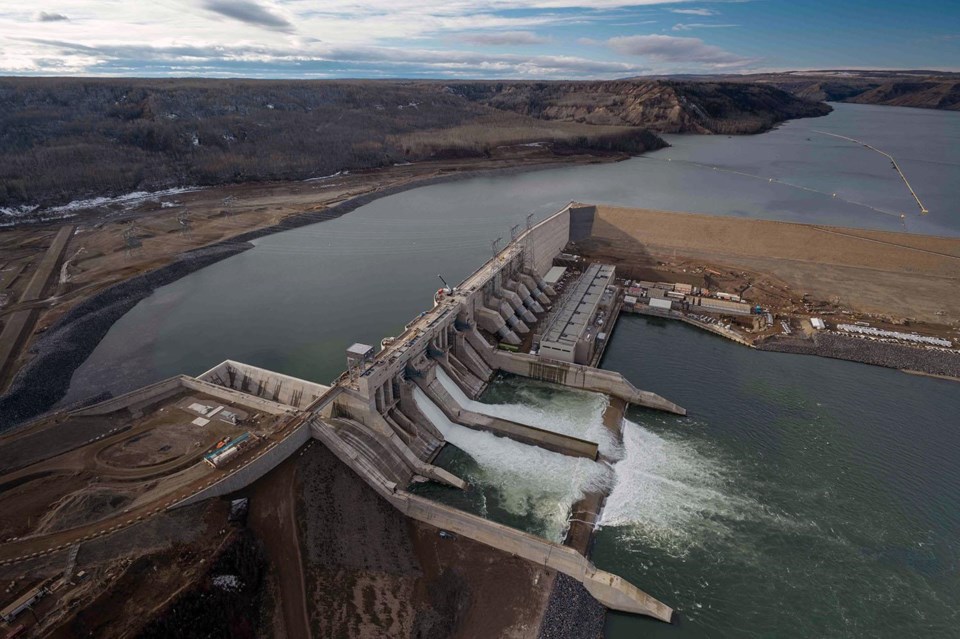British Columbia’s new Energy Minister, Adrian Dix, says he’ll be looking forward to his first tour of the Site C dam, the massive hydroelectric dam that started generating power last month without fanfare.
He will be the first cabinet minister to visit the massive construction site in the province’s Peace River region in almost three years. The NDP government approved the project only because it was already partly constructed when it first formed government in 2017, and even today, the government’s website on the project references that the New Democrats believed the project should never have been built.
The completion of the province’s first major dam in 40 years, however, is timely. The NDP government was reluctant to build Site C seven years ago, but the first of six generating units in the $16-billion project is coming on stream just as the province has set its sights on the economic opportunities in critical minerals and the artificial intelligence sector. Both are energy-intensive enterprises that would create significant new demands on the province’s electricity grid and Mr. Dix has a mandate to deliver that power.
When it becomes fully operational, slated for the fall of 2025, the Site C dam will provide 1,100 megawatts (MW) of capacity and increase BC Hydro’s supply by 8 per cent.
Today there is little doubt the energy is needed. Mr. Dix, one of the most powerful cabinet ministers in B.C. since the NDP formed government in 2017, was handed the energy portfolio on Monday when Premier David Eby introduced his new cabinet following last month’s provincial election.
The Premier said Mr. Dix’s appointment is a signal that his government regards the file as critically important to the province’s economic future.
“I need an experienced minister that’s able to deliver in terms of the huge opportunity that’s in front of us, which is our clean electricity advantage here in British Columbia, both in generating electricity to sell to the United States and Alberta, and generating electricity at low cost for major industrial customers,” Mr. Eby told reporters when he unveiled his new cabinet. “It’s part of a very clear and significant opportunity going forward.”
There are 17 critical-mineral mines proposed in B.C. that would, if completed, bring in more than $36-billion in private-sector investment. Securing those projects will fall to the new Minister of Mining and Critical Minerals, Jagrup Brar, who will have to find a way to deliver the NDP campaign promise to guarantee permit review timelines: The main thorn in the industry’s side is permitting delays.
But providing supply for the energy-intensive industry will land in Mr. Dix’s lap.
Michael Goehring, president and chief executive of the Mining Association of BC, said growth in his sector is expected to drive the biggest increase in electricity demand in the province. Counting only the new and expanding critical-minerals projects in B.C.’s “golden triangle” in the north would require an increase in capacity of about 1,500 megawatts.
“New investments in clean energy generation and transmission are necessary to enable the development of new mines and mine expansions and ensure our industry continues to have among the lowest carbon footprints in the world,” Mr. Goehring said Tuesday.
The energy ministry was reshaped for the new government. Mr. Dix is formally the Minister of Health, and that emphasizes the intention to wed economic growth with climate targets.
B.C. – like other provinces – is seeking to join a global critical-minerals revolution by developing mining for copper, nickel, lithium, graphite and cobalt needed for renewable energy projects and electric vehicles.
As well, the Crown-owned utility, BC Hydro, is watching the expansion of data centres that provide the infrastructure for generating AI. The AI industry currently makes up a small portion of demand in B.C.; however, BC Hydro is getting more inquiries about supplying electricity.
Mr. Dix, moments after his appointment was announced, told reporters that the challenge ahead is to manage the sometimes conflicting demands for developing new energy without undermining the province’s climate goals.
“You have to drive an agenda that allows people to have the energy they need for all the things that we do as a society and community, but also addresses issues of climate change, and that’s what I’m going to do.”



